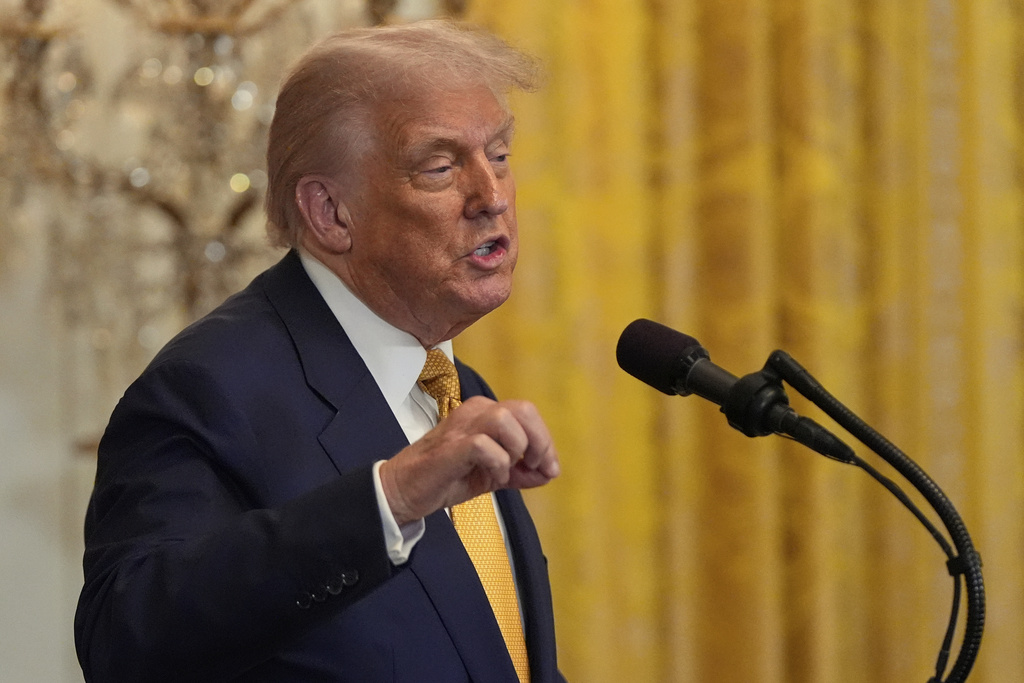Trump Unveils Japan Trade Deal, Cuts Tariff to 15%

Trump Announces New Trade Frameworks with Japan and Other Nations
President Donald Trump has introduced a new trade framework with Japan, which includes a 15% tax on goods imported from the country. This move is part of a broader strategy to reshape U.S. trade relations and position himself as a skilled dealmaker.
On social media, Trump shared his vision for the agreement, stating that it would "create hundreds of thousands of jobs" and mark a historic moment in U.S.-Japan relations. He emphasized that the United States will maintain a strong relationship with Japan while also encouraging increased investment from the nation into the American economy.
According to Trump's announcement, Japan is expected to invest $550 billion in the U.S. under this framework. Additionally, the agreement calls for Japan to open its markets to American automobiles and rice. The 15% tariff represents a reduction from the previously announced 25% rate, which Trump had indicated would be implemented starting August 1.
Japanese Prime Minister Shigeru Ishiba acknowledged the new trade agreement, expressing confidence that it would benefit both nations and foster closer collaboration. However, key details remain unclear, such as whether Japanese-built cars would face the higher 25% tariff that Trump imposed on the automotive sector.
This trade framework aligns with a growing pattern of Trump’s approach to tariffs, where he aims to present them as beneficial for the U.S. His administration argues that the revenue generated from these tariffs will help reduce the budget deficit and encourage more factories to relocate to America. This shift is expected to address trade imbalances and promote domestic manufacturing.
Despite these claims, the ongoing wave of tariffs continues to raise concerns about potential impacts on consumers and businesses. Companies may pass on the increased costs, leading to higher prices. These worries were evident when General Motors reported a 35% drop in net income during the second quarter, citing tariffs as a major factor in its financial performance.
As the Aug. 1 deadline for implementing the tariff rates approaches, Trump has also announced a new trade framework with the Philippines. This agreement would impose a 19% tariff on goods from the Philippines, while American-made products would not face import taxes. The president also reaffirmed his 19% tariffs on Indonesia.
The U.S. recorded a significant trade imbalance with Japan last year, totaling $69.4 billion. Similarly, the trade deficits with Indonesia and the Philippines were $17.9 billion and $4.9 billion, respectively. These countries are less economically developed than the U.S., and the trade imbalances reflect a situation where the U.S. imports more than it exports.
Trump is set to implement the broad tariffs outlined in his recent letters to world leaders on August 1. This has raised questions about potential breakthroughs in negotiations with the European Union. At a recent dinner, Trump mentioned that the EU would visit Washington for trade talks, stating, “We have Europe coming in tomorrow, the next day.”
Earlier this month, Trump sent a letter threatening the 27 member states of the EU with 30% taxes on their goods, effective August 1. Meanwhile, the Trump administration is engaged in separate negotiations with China, which are scheduled to continue through August 12. Goods from China are currently subject to an additional 30% baseline tax.
Treasury Secretary Scott Bessent is set to meet with Chinese counterparts in Stockholm next week. His goal is to shift the American economy away from consumption and encourage more consumer spending in the manufacturing-focused Chinese economy. Bessent highlighted this vision on Fox Business Network, stating that President Trump is working to transform the U.S. into a manufacturing economy. He suggested that a partnership between the two nations could lead to increased manufacturing in the U.S. and more consumption in China, benefiting the global economy.